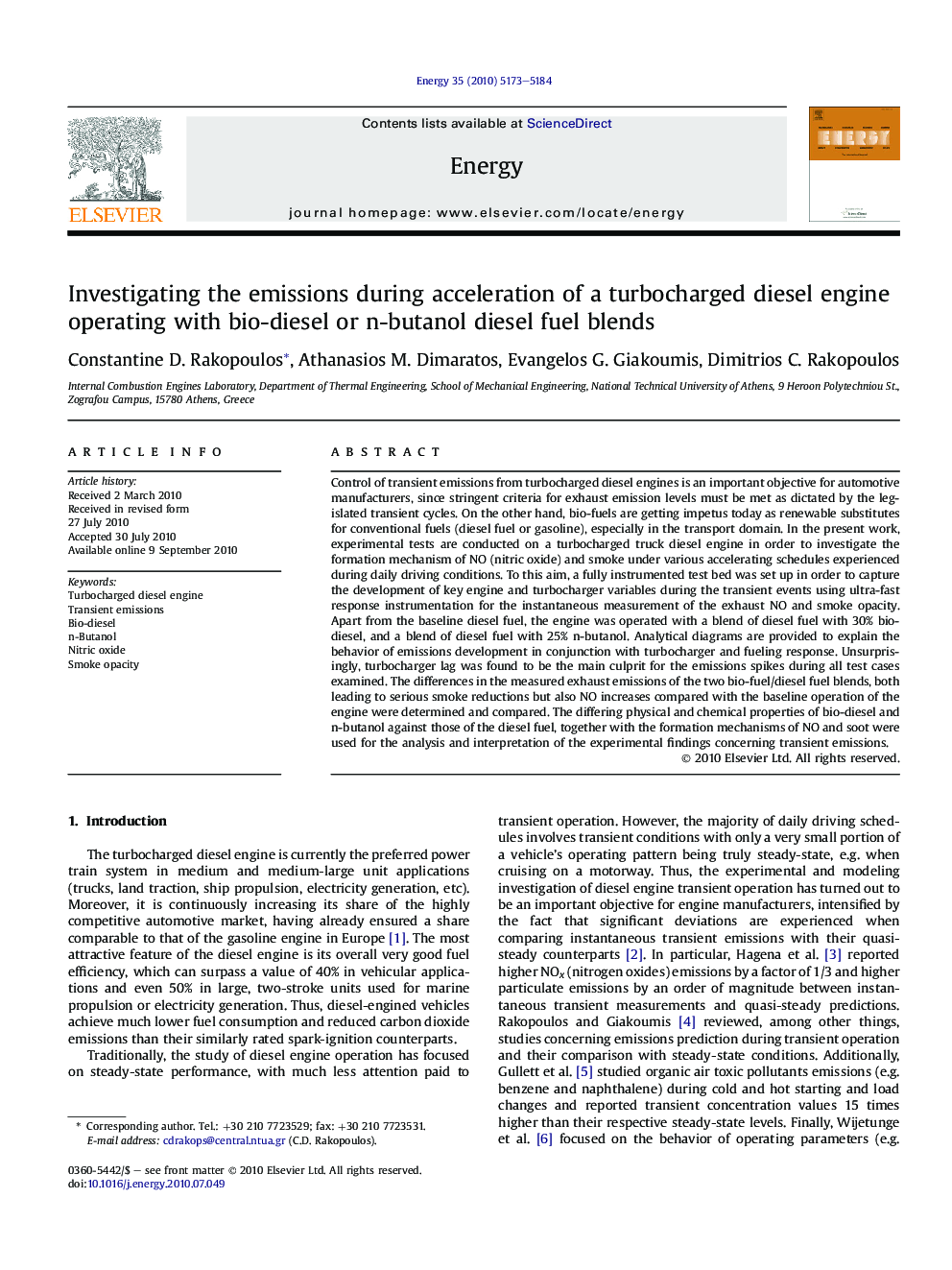| Article ID | Journal | Published Year | Pages | File Type |
|---|---|---|---|---|
| 10682813 | Energy | 2010 | 12 Pages |
Abstract
Control of transient emissions from turbocharged diesel engines is an important objective for automotive manufacturers, since stringent criteria for exhaust emission levels must be met as dictated by the legislated transient cycles. On the other hand, bio-fuels are getting impetus today as renewable substitutes for conventional fuels (diesel fuel or gasoline), especially in the transport domain. In the present work, experimental tests are conducted on a turbocharged truck diesel engine in order to investigate the formation mechanism of NO (nitric oxide) and smoke under various accelerating schedules experienced during daily driving conditions. To this aim, a fully instrumented test bed was set up in order to capture the development of key engine and turbocharger variables during the transient events using ultra-fast response instrumentation for the instantaneous measurement of the exhaust NO and smoke opacity. Apart from the baseline diesel fuel, the engine was operated with a blend of diesel fuel with 30% bio-diesel, and a blend of diesel fuel with 25% n-butanol. Analytical diagrams are provided to explain the behavior of emissions development in conjunction with turbocharger and fueling response. Unsurprisingly, turbocharger lag was found to be the main culprit for the emissions spikes during all test cases examined. The differences in the measured exhaust emissions of the two bio-fuel/diesel fuel blends, both leading to serious smoke reductions but also NO increases compared with the baseline operation of the engine were determined and compared. The differing physical and chemical properties of bio-diesel and n-butanol against those of the diesel fuel, together with the formation mechanisms of NO and soot were used for the analysis and interpretation of the experimental findings concerning transient emissions.
Related Topics
Physical Sciences and Engineering
Energy
Energy (General)
Authors
Constantine D. Rakopoulos, Athanasios M. Dimaratos, Evangelos G. Giakoumis, Dimitrios C. Rakopoulos,
